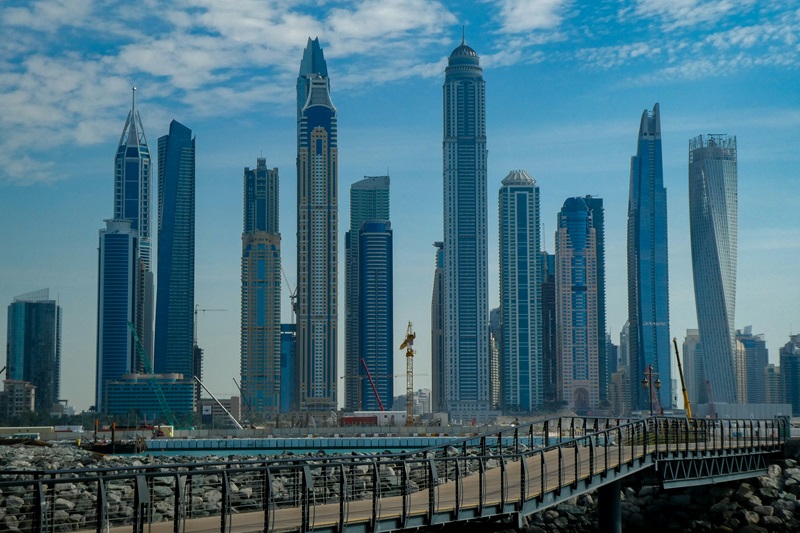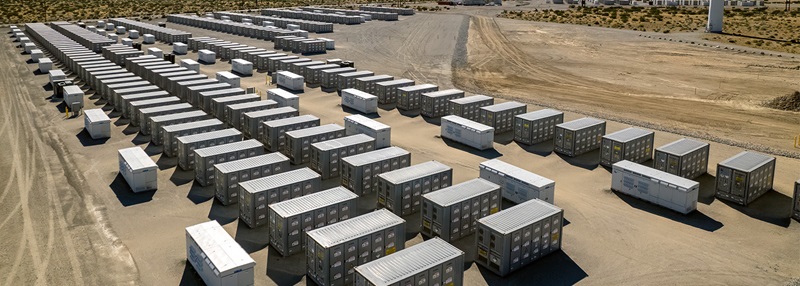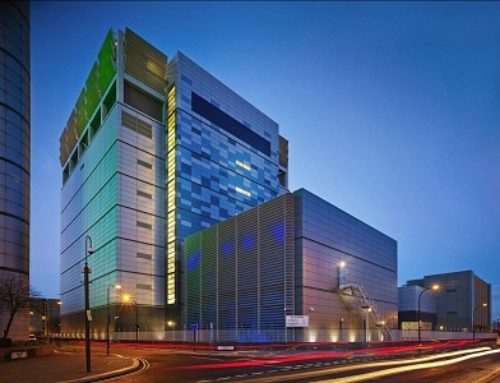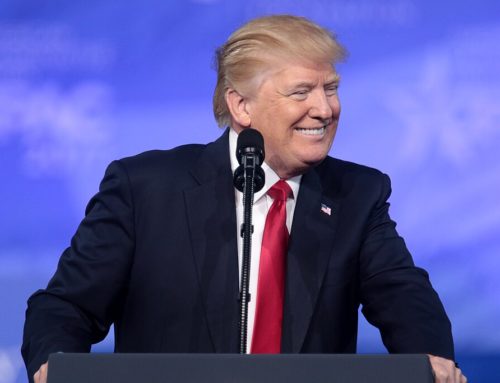1. Costa Rica’s Microchip Industry: A New Era of Growth and Opportunity
Costa Rica is experiencing a surge of optimism in its microchip industry, buoyed by recent developments and strategic investments. This Central American nation is positioning itself as a key player in the global semiconductor supply chain, thanks to significant support from the United States.
Strategic Investments and Partnerships
In July 2023, Costa Rica became one of the first beneficiaries of the U.S. International Technology Security and Innovation (ITSI) fund, a component of the 2022 Chips and Science Act. This initiative aims to bolster semiconductor assembly, testing, and packaging (ATP) capabilities in allied countries, thereby reducing reliance on East Asia. The ITSI fund, with an annual allocation of $100 million over five years, is set to enhance Costa Rica’s semiconductor ecosystem.
Building on a Strong Foundation
Costa Rica’s journey in the semiconductor industry began in 1996 when Intel established its first microprocessor assembly and testing facility in Heredia. Since then, the industry has expanded to include over a dozen companies, including major multinationals like Qorvo, Samtec, and National Instruments. This growth has been supported by the country’s success in attracting foreign direct investment (FDI), particularly in the medical devices sector, which was the largest contributor to its exports by value in 2023.
Challenges and Opportunities
Despite its progress, Costa Rica faces challenges such as infrastructure bottlenecks and competition from larger, more established countries. However, the government’s commitment to strengthening the local semiconductor ecosystem and replicating its success in other high-tech industries offers a promising outlook.
A Bright Future Ahead
With continued support from the ITSI fund and strategic efforts to enhance its semiconductor capabilities, Costa Rica is well-positioned to play a crucial role in the U.S. semiconductor value chain. This development not only boosts the local economy but also contributes to reshaping the global supply chain, making it more resilient and diversified.
2. UAE FDI Outperforms

Nick Fewings via Unsplash
In a remarkable achievement, the United Arab Emirates (UAE) has ascended to the top of the Foreign Direct Investment (FDI) Outperformer Ranking for 2023. This prestigious recognition comes from fDi Intelligence’s Greenfield FDI Performance Index, which evaluates countries based on their ability to attract FDI relative to the size of their economies.
Record-Breaking Performance
The UAE’s rise to the top spot is attributed to a record number of companies establishing operations in the country. In 2023, the UAE saw a significant increase in FDI projects, particularly in sectors such as business services, technology, real estate, and industrial equipment. This surge in investment projects underscores the UAE’s strategic position as a global business hub and its commitment to creating a conducive environment for foreign investors.
Comparative Success
The UAE’s performance outshone other notable countries. Montenegro and Costa Rica followed in second and third place, respectively. Montenegro, a new entrant to the index, demonstrated impressive growth by attracting a substantial number of FDI projects, while Costa Rica, which had previously held the top spot for three consecutive years, experienced a slight decline in FDI projects due to strong GDP growth.
Strategic Initiatives
Several strategic initiatives have contributed to the UAE’s success in attracting FDI. The government has implemented policies aimed at enhancing the ease of doing business, including regulatory reforms, investment in infrastructure, and the establishment of free zones that offer tax incentives and other benefits to foreign investors. These measures have made the UAE an attractive destination for businesses looking to expand their global footprint.
Future Prospects
Looking ahead, the UAE is well-positioned to maintain its leading position in the FDI rankings. The country’s ongoing efforts to diversify its economy, coupled with its strategic location and robust infrastructure, are likely to continue attracting significant foreign investment. As the UAE builds on its success, it sets a benchmark for other countries aiming to enhance their FDI performance.
3. Egypt Targets EU Investment

Simon Berger via Unsplash
Introduction
In a significant move to bolster its economy, Egypt is targeting increased investment from the European Union (EU). This initiative was highlighted during the recent EU-Egypt Investment Conference, where European Commission President Ursula von der Leyen emphasised that this is “just the beginning” of a strengthened partnership between the two regions.
Investment Goals and Commitments
Egypt aims to draw €2 billion ($2.19 billion) from the EU to fund new industrial projects this year. The country hopes to increase its exports to the EU by 10% by the end of 2024, reaching €12.5 billion ($13.7 billion) in trade, up from €11.5 billion ($12.6 billion) the previous year. Currently, investments from the EU contribute 32% of total foreign direct investment (FDI) inflows in Egypt.
Recent Developments and Agreements
The conference saw the signing of a memorandum of understanding (MoU) for the disbursement of €1 billion ($1.09 billion) in macro-financial assistance to Egypt. This aid is intended to boost the private sector and support Egypt’s reform agenda, fostering a stronger business environment and attracting more investments.
Strategic Sectors and Future Prospects
One of the key areas of focus is the renewable energy sector. Egypt’s sovereign wealth fund recently signed agreements valued at $35.4 billion with European companies to produce green ammonia, positioning the country as a potential clean energy hub in the Mediterranean. Von der Leyen highlighted the strategic importance of these investments, stating, “We deliver strategic investments that will help make Egypt a clean energy hub at the centre of the Mediterranean crossroads”.
Challenges and Criticisms
While the investment drive is promising, it is not without its challenges. The short-term aid is also aimed at curbing irregular migration, a move that has been criticised by NGOs as another EU “cash for migrant control” deal. Despite these criticisms, Egypt remains focused on raising FDI inflows to bolster its private sector and boost its economy.
Conclusion
The EU-Egypt partnership is set to bring significant economic benefits to both regions. With strategic investments and a focus on renewable energy, Egypt is poised to become a key player in the Mediterranean’s economic landscape. As von der Leyen aptly put it, this is “just the beginning” of a new era of cooperation and growth.
4. SUSI Partners to Fund Major Battery Energy Storage Projects in Chile

Swiss investment firm SUSI Partners has announced a significant expansion of its activities in Chile through its SUSI Energy Transition Fund (SETF). The firm has agreed to fund the development of a substantial battery energy storage portfolio in the central-southern region of the country. This move marks a strategic evolution in SUSI’s ongoing partnership with local developer BIWO Renovables.
Expanding Renewable Energy Infrastructure
The new initiative involves a portfolio of 22 battery energy storage projects, with a targeted total capacity of 860 MW and up to 3.5 GWh. Most of these projects are in advanced stages of development, with the first expected to commence construction in the first half of 2025. This development is crucial as Chile continues to increase its share of intermittent renewable energy on the power grid.
Strategic Partnership and Local Expertise
BIWO Renovables, SUSI’s existing patner, has secured interconnection capacity in strategically valuable locations for these projects. This partnership leverages both SUSI’s investment expertise and BIWO’s local knowledge and networks, enabling access to proprietary project pipelines and the ability to quickly capitalise on market-specific opportunities.
Addressing Grid Stability
As Chile’s power grid integrates more renewable energy sources, standalone battery energy storage systems are emerging as the most cost-efficient and rapid deployment solution for grid stability. This is reflected in the recently updated Chilean capacity market regulation, which specifically addresses the need for energy storage solutions.
A Milestone in Energy Transition
This investment underscores SUSI’s commitment to supporting the global energy transition. SETF, the firm’s evergreen infrastructure equity fund, holds a diversified portfolio across various energy transition themes, including clean energy generation, energy efficiency, customer energy solutions, and electric vehicle charging.
Conclusion
SUSI Partners’ investment in Chile’s battery energy storage projects represents a significant step towards enhancing the country’s renewable energy infrastructure. By combining their expertise with BIWO’s local insights, SUSI is well-positioned to contribute to Chile’s sustainable energy future.
5. How Data Centres Can Attract Large Amounts of FDI

Le datacenter Normandie de Cloudwatt à Val-de-Reuil (Eure) by Cloudwatt CC BY-SA 3.0 https://creativecommons.org/licenses/by-sa/3.0/deed.en
In today’s digital age, data centres have become the backbone of the global economy, supporting everything from cloud computing to artificial intelligence. As countries strive to enhance their digital infrastructure, data centres have emerged as a key driver for attracting Foreign Direct Investment (FDI). Here’s how data centres can play a pivotal role in drawing substantial FDI:
1. Infrastructure Development
Data centres require significant infrastructure investments, including state-of-the-art facilities, robust power supplies, and advanced cooling systems. These investments not only create jobs but also stimulate local economies. For instance, the construction of a typical data centre in the US involves a capital expenditure of around $215.5 million, generating $243.5 million in output and employing 1,688 local workers. Such large-scale projects attract foreign investors looking for stable and profitable opportunities.
2. Technological Advancements
Countries that invest in data centres position themselves as leaders in technological innovation. Data centres are essential for the growth of emerging technologies like AI, IoT, and big data analytics. By providing the necessary infrastructure, countries can attract tech giants and startups alike. For example, Amazon Web Services (AWS) has made multi-billion dollar investments in data centre infrastructure in various countries, driven by the need to support their global cloud services.
3. Economic Incentives
Governments can offer economic incentives to attract FDI in data centres. These incentives can include tax breaks, subsidies, and streamlined regulatory processes. For instance, Virginia in the US has rolled out sales and tax exemptions to bolster its Data Center Valley, attracting significant investments from AWS. Such incentives make it financially attractive for foreign companies to invest in local data centre projects.
4. Strategic Location
The location of data centres is crucial for attracting FDI. Proximity to major markets, availability of renewable energy sources, and political stability are key factors that investors consider. Europe, for example, has become a major hub for data centres, with countries like Germany and the UK hosting over 500 centres each. These strategic locations offer reliable infrastructure and access to a large customer base, making them attractive for foreign investors.
5. Sustainability Initiatives
As environmental concerns grow, sustainability has become a critical factor for attracting FDI. Data centres consume large amounts of energy and water, which can have significant environmental impacts. Countries that invest in green technologies and sustainable practices can attract environmentally conscious investors. For instance, some data centres are now being designed to use renewable energy sources and advanced cooling technologies to reduce their carbon footprint.
6. Digital Transformation
Emerging economies with rising internet penetration rates can leverage data centres to power their digital transformation. By attracting FDI in data centres, these countries can accelerate their digitalisation efforts, providing better services to their citizens and businesses. This, in turn, creates a positive feedback loop, attracting more FDI as the digital economy grows.
Featured image Avenue centrale, San José, Costa Rica by Cephas CC BY-SA 4.0 https://creativecommons.org/licenses/by-sa/4.0/deed.en







